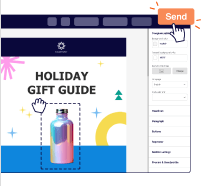Targeted marketing, by definition, is the strategy of tailoring and personalizing online advertising according to data acquired from some intended audience. In other words, instead of sending out ads to an incredibly large audience, a subset is selected based on their traits, interests, and preferences.
Of course, targeted marketing has numerous associated benefits. After all, you’re basically sending advertisements to people who are highly likely to be interested in them. It’s hard to fail such a strategy.
In fact, targeted marketing is the preferred strategy by consumers. When allowed to pick between random or targeted advertisements, over 40% prefer the latter, and 27.6% prefer either.
Additionally, behavioral-data-based ads were shown to be the most effective—their clickthrough rate was up to 5.3x higher when compared to other approaches.
Is Targeted Marketing Ethical?
Usage, storage, and collection of data have gotten a lot of buzz over the past years. With all the new legislation, such as GDPR and CCPA, internet users and legislators looked towards clamping down on the use of personal data.
Unfortunately, without some measure of personal data, targeted marketing would be impossible. It is fully based upon the large amounts of data your or other businesses have collected on customers.
Yet, in most cases, targeted marketing will be ethical. Users now have a lot of tools regarding the control of their personal data. They may ask for all data to be deleted, or they can reject cookies and targeted advertising altogether when visiting a web page. Thus, the legal and ethical dangers of targeted advertising are mostly overblown.
If a person provides consent for their data to be collected and used, there are hardly any ethical questions left. Add the fact that most consumers enjoy receiving targeted advertising, and you get clear solutions to all the ethical questions.
Benefits of Targeted Marketing
Because targeted marketing campaigns are highly personalized and directed at specific segments for whom it’s intensely relevant, it’s not surprising to see this turn into a highly interactive conversation and witness engagement hit the roof.
This, in turn, leads to better leads and better sales because prospects now see reasons to stay both associated with and interested in your business.
Targeted marketing gives you the following advantages:
- Enhances brand awareness;
- Drives engagement;
- Improves quantity and quality of lead generation;
- Increases sales and, therefore, business revenue;
- Increases ROI (Return on Investment) from your marketing campaigns;
- Reduces wasted ad spend by focusing on qualified prospects;
- Creates more relevant customer experiences.
All of the above at operational costs that are significantly more efficient than broad-reach advertising!
Importance of Segmentation in Targeted Marketing
As mentioned previously, all targeted marketing relies on segmentation. Audiences are separated according to specific criteria, and advertisements are tailored to each. Of course, with enough data, the audiences can become extremely detailed and narrow. However, it is often recommended to avoid hyper-targeted marketing.
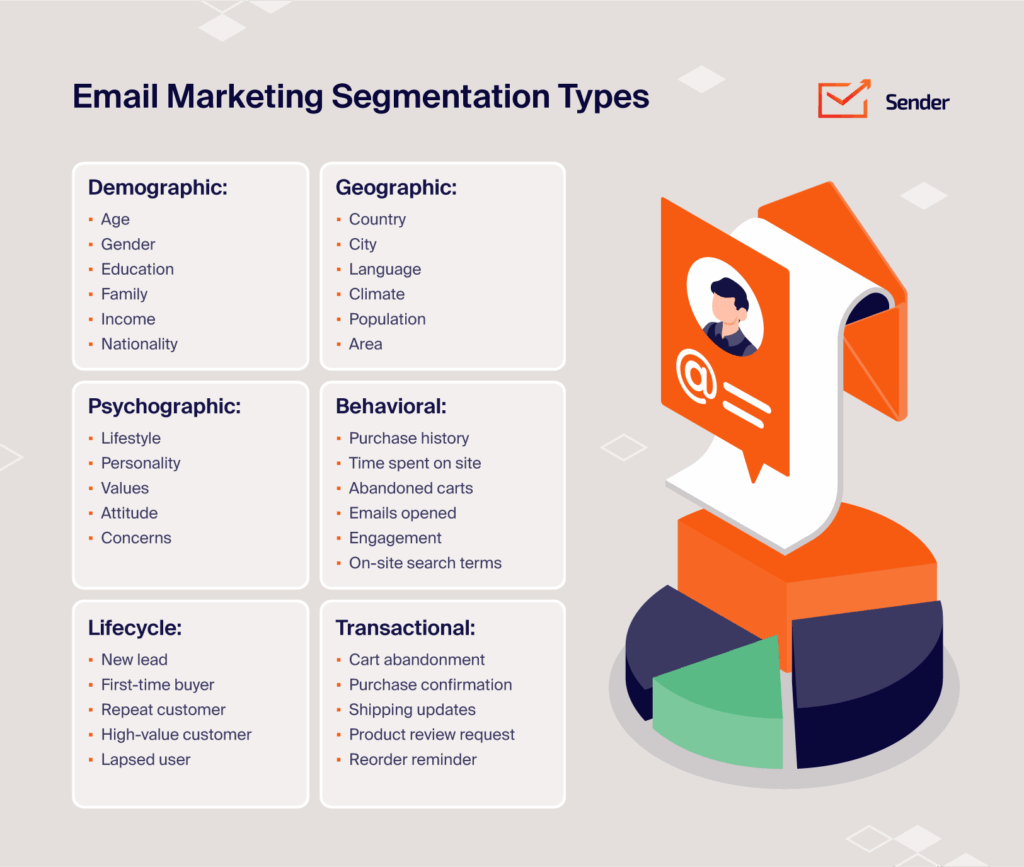
Market and customer segmentation can be approached in a multitude of ways. However, there are several primary ways to split audiences. Marketers and business owners should create segments based on demographics, geographics, psychographics, behavioral patterns, and lifecycle stages.
One of the best ways to target customers or prospects is through email marketing.
Take your marketing to the next level with targeted campaigns your audience will care about.
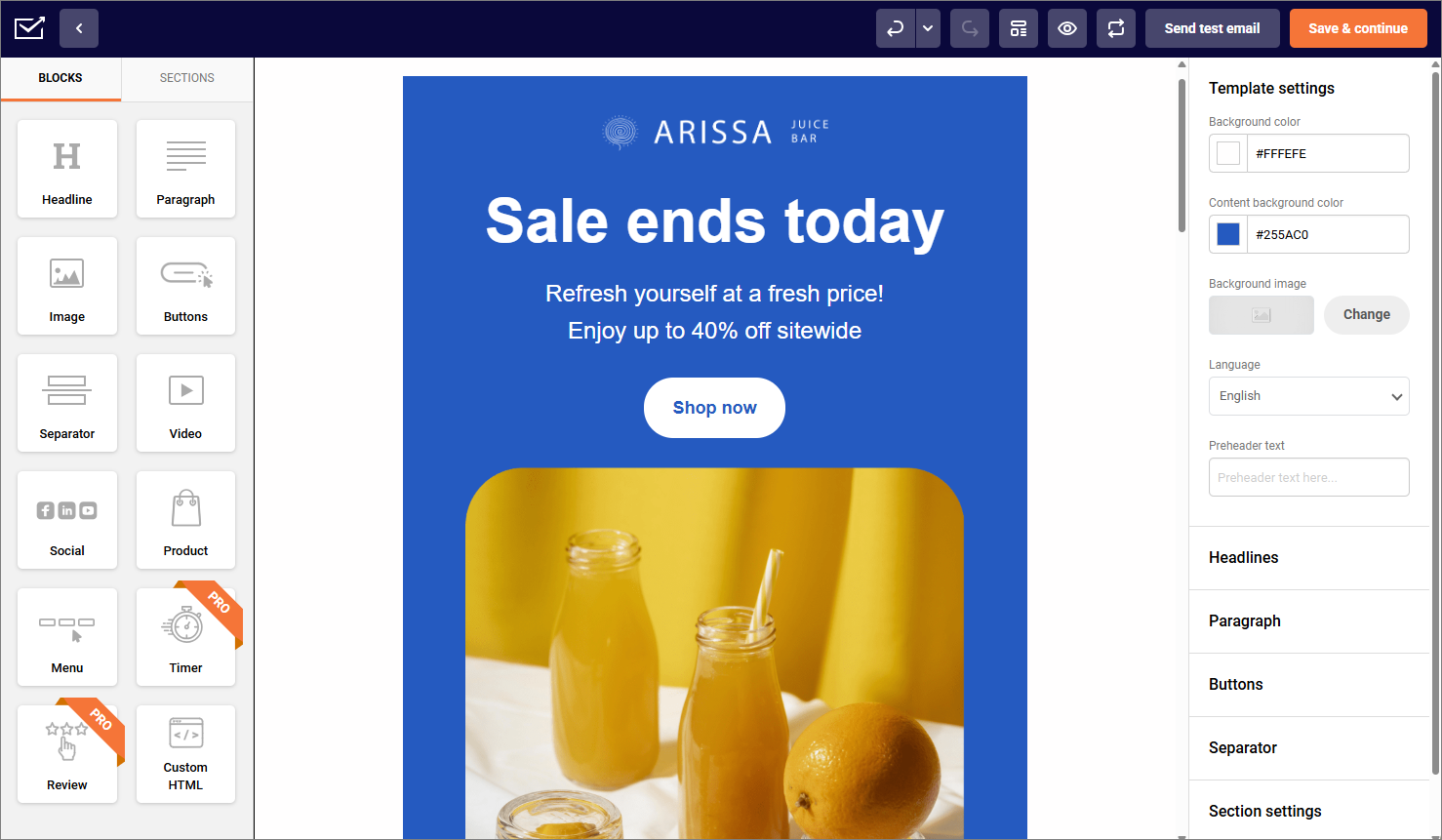
Different Types of Targeted Email Marketing
Some of the most common ways you can choose to target your email list:
Demographic Segmentation
One of the most basic and obvious ways to segment large amounts of people. Demographic segments usually categorize audiences based on:
- Age;
- Gender;
- Marital status;
- Race;
- Religious affiliation;
- Predicted income level;
- Education;
- Nationality;
- Occupation and job title.
While demographic segmentation is extremely basic, it does have a lot of benefits. For example, there are certain hobbies or activities that are statistically preferred by a specific age or gender brackets. As a result, age or gender-targeted advertising can be effective for certain business models.
Additionally, people in different age brackets react to content differently. A great example is the tone of your website. If your intended audience is 18-25 years old, your content and marketing practices will be wildly different than if your intended audience is 35-45 years old.
Geographic Segmentation
Geographic (or geo) segmentation is, as the name says, the practice of splitting audiences according to location-based data. Such segmentation is extremely important if your business ships or delivers physical products. Usually, you’ll need data such as:
- Country;
- City;
- Region (State);
- Area code;
- ZIP code.
With geo segmentation, you’ll be able to target customers with local advertising or location-based discounts (e.g. free shipping).
Psychographic Segmentation
One of the most advanced types of segmentation, psychographic, looks at socioeconomic factors and correlated preferences. However, in order to properly apply psychographic segmentation, a lot of data is required. Usually, these segments will include:
- Social class (Upper/middle/lower);
- Values;
- Beliefs;
- Interests;
- Lifestyles;
- Desires and aspirations;
- Pain points and frustrations.
You may not have access to all of the data points listed above, or you may have access to more. Nevertheless, psychographic segments are useful to retailers and businesses selling many lifestyle-driven items.
Behavioral Segmentation
Behavioral targeting focuses on how users interact with your brand, including:
- Browsing history;
- Purchase history;
- Email engagement (opened or not opened);
- Product usage patterns;
- Cart abandonment;
- Website interactions.
This type of segmentation is particularly powerful because it’s based on actual actions rather than assumed characteristics. Combined with demographic and psychographic data, behavioral segmentation helps create highly accurate buyer personas.
Lifecycle Segmentation
Lifecycle targeting recognizes that users have different needs depending on where they are in the customer journey:
- New leads;
- First-time buyers;
- Repeat customers;
- Lapsed or dormant users;
- VIP or high-value customers.
Understanding the customer lifecycle allows you to deliver the right message at the right time, whether that’s onboarding a new subscriber or re-engaging someone who hasn’t purchased in months.
Transactional Segmentation
Transactional segmentation triggers automated messages based on specific actions or events that occur during the customer’s interaction with your business:
- Purchase confirmations;
- Cart abandonment;
- Shipping and delivery updates;
- Order status changes;
- Payment receipts;
- Subscription renewals or expirations;
- Trial period endings.
This type of segmentation is highly effective because it delivers timely, expected communication when customers are most engaged. Transactional emails typically achieve higher open rates than promotional messages because they provide information customers actively want or need, making them an excellent opportunity to reinforce your brand and encourage further engagement.
Targeted Marketing Strategies and Examples
Before we get into the particularly targeted marketing strategies, one important thing to note is that all strategies depend on data. If you can’t acquire lots of in-depth data on your target audience or are lacking in the analytics department, targeted marketing will be significantly harder.
Targeted Email Marketing
When it comes to online marketing, emails are an essential part of the process. In fact, companies will often begin their targeted marketing campaign by considering the email channel first.
Like all other approaches to targeted marketing, campaigns begin with email list segmentation. You can’t send highly targeted messages if the audience isn’t separated according to certain criteria. That’s where data will come in.
If you run an ecommerce store, some of your shoppers might prefer a particular type, color, or size of the product. Gathering data on all these preferences will allow you to build highly targeted messages for each segment, which will, of course, result in more and better leads.
Also read: What is a Trigger Email? Definition, Types & Examples
Targeted SMS Marketing
Targeted SMS marketing is really no different from all the other strategies. However, it might be significantly more effective than many other marketing channels. We have described the incredible effectiveness of SMS campaigns in our previous articles.
Yet, it would be most efficient to build a consistent user profile from data acquired in email marketing (and other channels). SMS marketing is not as conducive to producing data as there’s barely any tracking available for it.
Additionally, it’s usually a very responsive and quick channel, which might skew certain datasets (e.g. shopping behavior might be different, but the differences might be due to the channel itself, not the users).
Of course, targeting users with SMS marketing is a boon to many industries. One of the few industries where it’s most effective is ecommerce and retail. As the industries have a ton of data on customers, they can create custom, tailored SMS messages that will truly resonate with the intended audience.
Additionally, ecommerce and retail are heavily driven by sales and promotional messages as they are B2C businesses with largely low-cost items. As a result, people can be easily drawn in by small deals or discounts. Adding targeted SMS messages into the mix will likely end in resounding success.
Targeted Social Media Marketing
Social media is where targeted digital marketing gets a little complicated but interesting. There isn’t a lot of overarching strategy to it, as the way customers use social media differs greatly between platforms. Yet, it’s important to note that over 40% of consumers use social media for product research. Therefore, social media is the perfect candidate for targeted marketing.
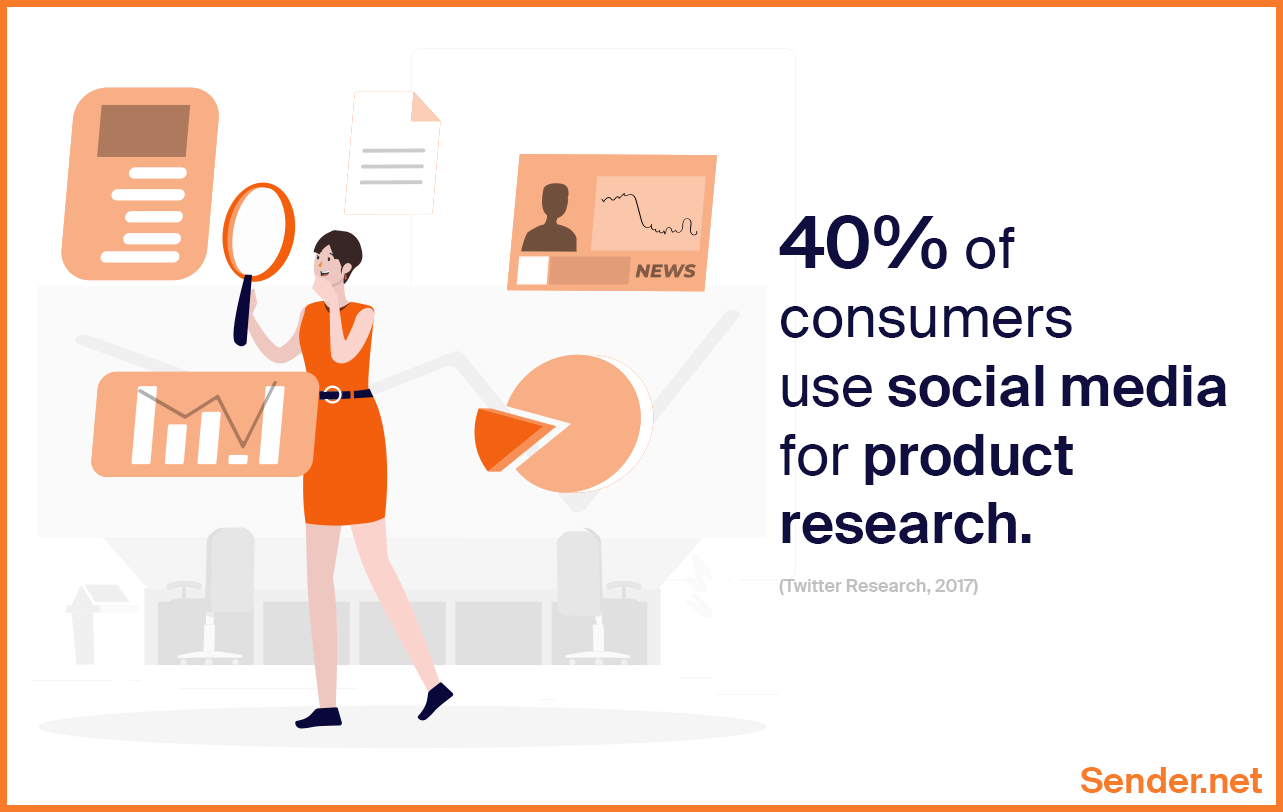
On many platforms, such as YouTube, Twitter, or Pinterest, audience targeting will be different. Essentially, for targeting, you can only use the data provided by the platform to deliver digital advertising. You can incorporate internal data into social media marketing in general, however, with targeting, it’s a little different. You’re best off not matching audiences, as social media gives you access to much wider ones.
As a result, you might need to approach segments differently. Social media can be used primarily for retargeting (as support for other channels). It can, however, also be used on its own. In these cases, your approach should be to create a combination of demographics and interest in order to reach the intended audience.
Facebook and Instagram Marketing
Facebook provides as much data as you need to get your marketing plan going. The types of data on offer are:
- Gender;
- Interests;
- Relationship Status;
- Occupation, as well as job title targeting;
- Educational Status;
- Age;
- Language;
- Location, including if someone lives in an area or just visiting.
They also provide even narrower targeting such as birthday targeting. Additionally, Facebook is integrated with Instagram, which provides an opportunity to target the same user over several platforms. With all the customization Facebook marketing provides, everyone can perform effective segmentation and targeted marketing.
LinkedIn Targeted Advertising
LinkedIn provides much the same as Facebook and Instagram. They do, however, have a very different overall audience. In fact, the same ads that work on Facebook and Instagram likely won’t work as well on LinkedIn.
LinkedIn is mostly used by professionals for business or work purposes, so the tone is very different on the page. Due to the business-related nature of the platform, LinkedIn is highly favored by B2B companies because it provides access to higher-quality leads.
As a result, your targeted marketing strategy should be a little different on LinkedIn. Segment the audiences based on industries and professions. If you already have buyer persona’s built, marketing to these buyers will be most effective.
LinkedIn also cautions against hyper-targeted marketing. With enough data, audiences can be narrowed down to only several hundred people. Yet, such narrow targeting is unlikely to be as successful as targeting a wider but less ideal audience. Restrictions are there for a reason. LinkedIn themselves recommend keeping about 50 000 people in every audience.
Targeted Content Marketing
Targeted content marketing can be conducted passively and actively. Passive targeted content marketing is done by a lot of businesses who have a blog. On-site content revolves around the interests, pain points, and challenges of their buyer personas.
Active marketing works by creating highly specific pieces of content that may then be distributed through different channels. For example, using account-based marketing and sending white papers would be an example of active content marketing.
It should be noted, however, that the goal of the content is to get people into the sales funnel. Therefore, it should not only be directed at specific buyer personas, but also reveal some form of benefit that can be derived by using your products or services.
Google Ads Targeted Marketing
In Pay-Per-Click (PPC) ads, segmentation and targeting is king. A lot of the strategies, segments, and approaches to targeted marketing can be derived from PPC.
Of course, Google Ads has long been the primary asset of PPC targeted marketing. As it can reach the widest audiences and has (or at least used to have) the most in-depth and granular data, marketers could do a lot with simple ads. In fact, Google Ads have been so powerful that they even are used for highly advanced strategies such as reminder and reinforcement advertising.
As most digital businesses already use or have used Google Ads, a lot of the strategies, segments, and approaches to advertising can be lifted and moved to other channels. For example, PPC can help content build good buyer personas and provide data to email marketers. In fact, readapting Google Ads targeted marketing strategies to other types of targeted marketing might be the easiest way to get the most benefit out of such an approach.
Creating Effective Targeted Email Campaigns
Building a winning targeted email campaign follows these key steps:
1. Define detailed Buyer Personas
You probably have an excellent idea of what problems your product solves. Now lean back for a second and think about who might be having this problem and how many of them would benefit from your offering. Those right there are your buyer personas.
Your customer persona will detail your ideal customer’s demographics (age, gender, location, education, income), social behaviors (where do they hang out online), and emotional triggers (desires, aspirations, dreams, pain points, frustrations).
2. Segment Subscribers
Start with demographics-based segmentation, which typically divides your contact list by demographic data and customer information. Combined with behavioral segmentation—which is more about how users interact with your brand—you’ll already see buyer personas shaping up.
If you run an ecommerce store, some of your shoppers might prefer a particular type, color, or size of the product. Gathering data on all these preferences will allow you to build highly targeted messages for each segment, which will, of course, result in more and better leads.
Personalized email campaigns account for more than 75% of email marketing ROI, making it one of the most cost-effective ways to boost your campaigns.
3. Develop Targeted Email Content
Even when you’re promoting the same product, how you position it should change depending on who you’re talking to. Different segments respond to different messaging, and that will make a big difference in the performance of your email marketing campaign.
Take a SaaS business, for example. A small startup might be most interested in pricing flexibility and ease of setup, while an enterprise client cares more about scalability and integration features. By understanding these priorities, you can send relevant email content that speaks directly to each segment’s needs.
4. Launch and Monitor Your Campaign
Start by setting clear, measurable key performance indicators (KPIs)—whether it’s boosting product sales, increasing event registrations, or reactivating dormant users. Then roll out your campaign with messages tailored to each segment’s needs and interests.
Once your campaigns are live, track metrics like open rates, click-through rates, and conversions to get valuable insights on how each segment is responding. Watching your campaign closely helps you spot what’s working and where to fine-tune for better results.
5. Test and Optimize Performance
A/B testing is the cornerstone of any good marketing campaign. In fact, A/B testing alone can boost click-through rates by up to 30%. Test different elements like:
- Subject lines (compelling ones increase opens);
- Email design (clean, visually engaging layouts);
- Calls-to-action (test placement, color, and copy);
- Email copy (variations in tone, length, and personalization);
- Send times (test different days and hours).
Targeted Email Marketing Examples
There are a lot of different types of email campaigns—abandoned cart campaigns, win-backs or newsletters, just to name a few. While they share some qualities, being great at all of them is like being a chef who’s mastered everything from sushi to soufflés.
Each email marketing campaign type serves a different purpose in the customer journey, so your messaging, timing, and tone should shift accordingly.
Below we’ll go over some highly efficient targeted email examples to see what makes them so effective.
Welcome & Onboarding Series
Welcome emails are a highly effective way to say ‘Hey, we see you!’ to new subscribers and kick off the relationship on the right foot. Hormbles Chormbles, the cheeky, tongue-twisting snack bar brand, nails the art of first impressions with this vibrant, high-energy welcome email.

Instead of relying on hard sells or over-personalization, let the product and personality shine. This proves you don’t need deep data dives to be effective—just thoughtful timing, fun design, and messaging that makes subscribers feel like they’ve joined something exciting.
Abandoned Cart Recovery
Sometimes Always knows how to turn casual browsing into a sense of urgency. In this abandoned cart-style targeted email, the brand cleverly uses the user’s recent activity — checking out wine bottles (‘We noticed you checking out some very nice bottles — But they’re going fast.’) — to open with a personalized message that complements their taste.
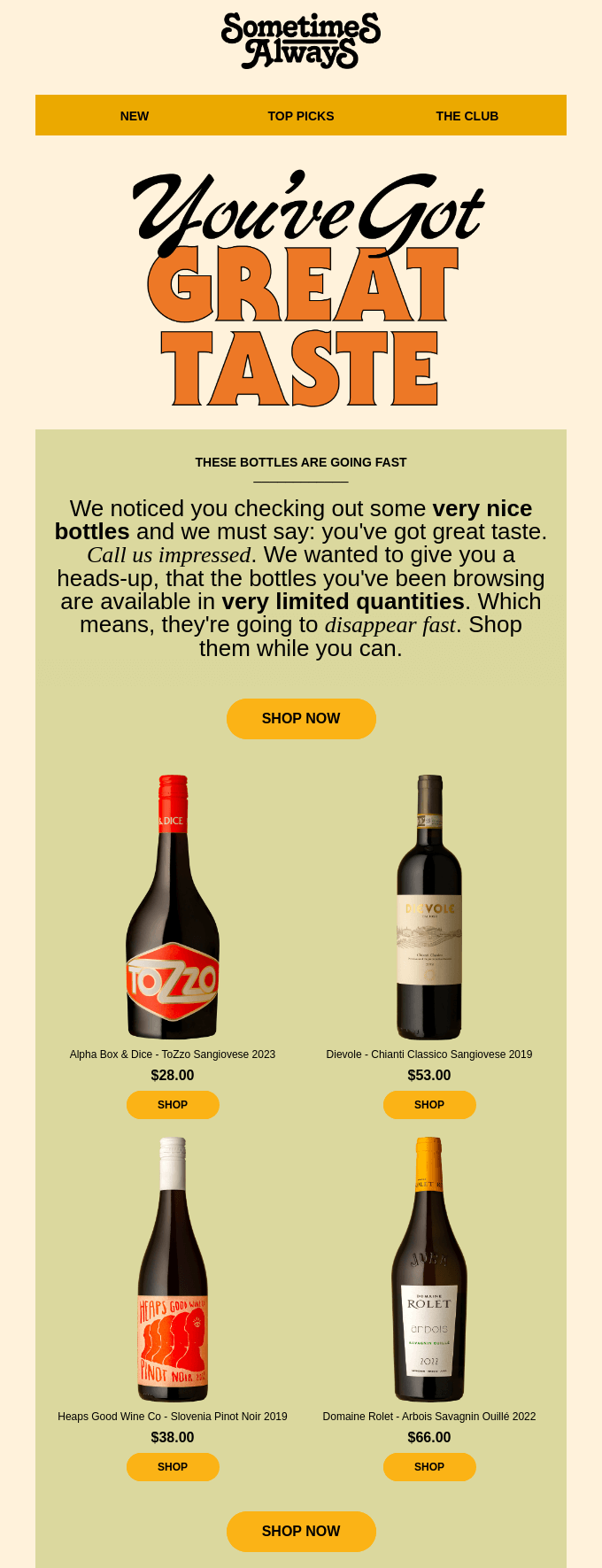
This combination alone can make the recipient feel seen, valued and equally thirsty for some red. Rather than listing products generically, present each one with appealing imagery, pricing, and a direct call-to-action. This makes the checkout process feel seamless and recreates the feeling of browsing in-store with an added gentle push to act on the original impulse.
Customer Lifecycle Campaigns
Customer lifecycle marketing delivers tailored messages based on where users are in their journey — from discovery to onboarding to loyal customers. Instead of regular targeted promotions, customer lifecycle campaigns focus on timing and relevance. This helps brands guide users from first interaction to lasting engagement by addressing their needs at every step.
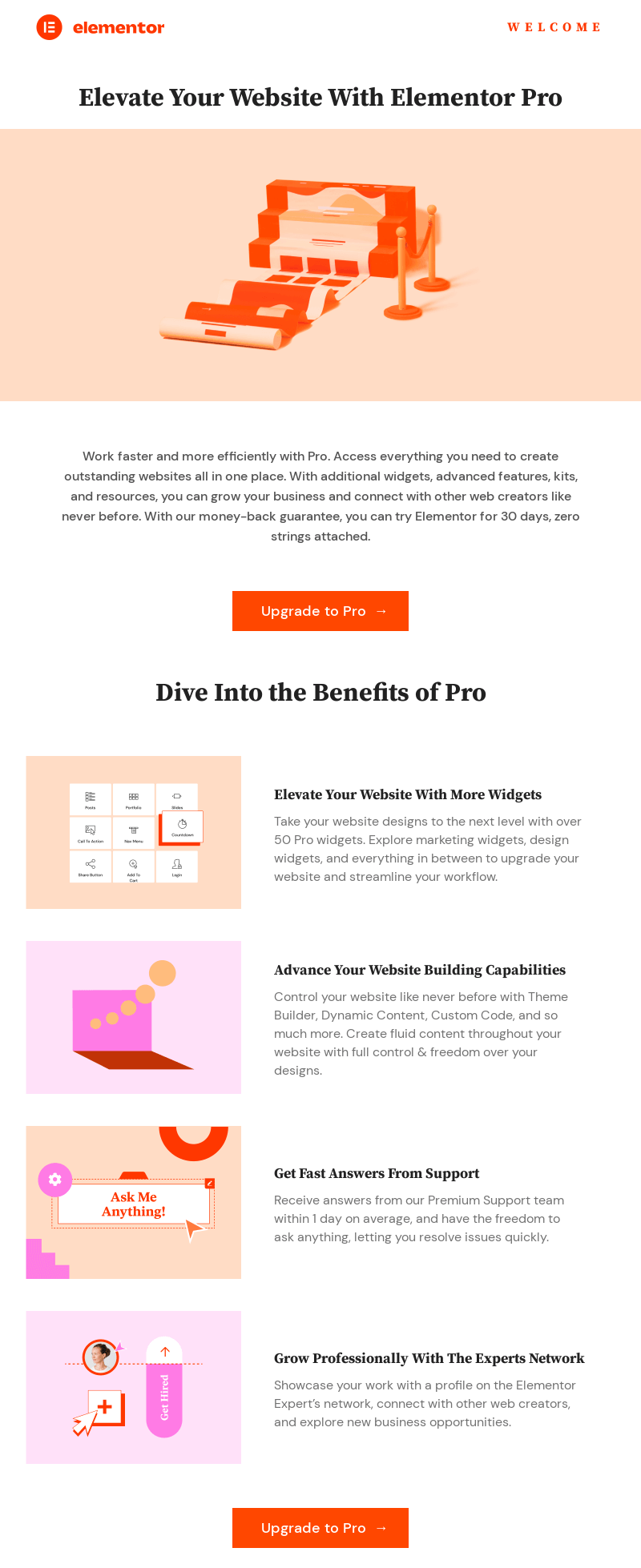
Elementor’s ‘Elevate Your Website With Elementor Pro’ email is a standout example of this. Aimed at free users familiar with the platform, it nudges them toward upgrading by showcasing exactly what they’re missing out on — extra widgets, design freedom, faster support, and access to a professional network. And that 30-day free trial, let alone shiny CTA (‘Upgrade to Pro’)? An absolute cherry on top.
Win-Back & Re-engagement
Win-back emails can be tricky due to the fact that your targeted audience mightn’t have opened one of your emails in months. But RIND, a better-for-you snack brand, demonstrates how to win back users with a playful and pun-filled approach.

Give subscribers a chance to self-identify—whether they’re just on a break or ghosting for good. Don’t push too hard; instead offer an easy path to re-engage. That balance of charm and clarity makes win-back emails effective.
Purchase-Based Recommendations
Purchased-based targeted email is exactly what it sounds like—brands making recommendations based on a recipient’s past interactions with their service. And there’s nothing that says ‘we know you!’ better like product-recommendation emails.
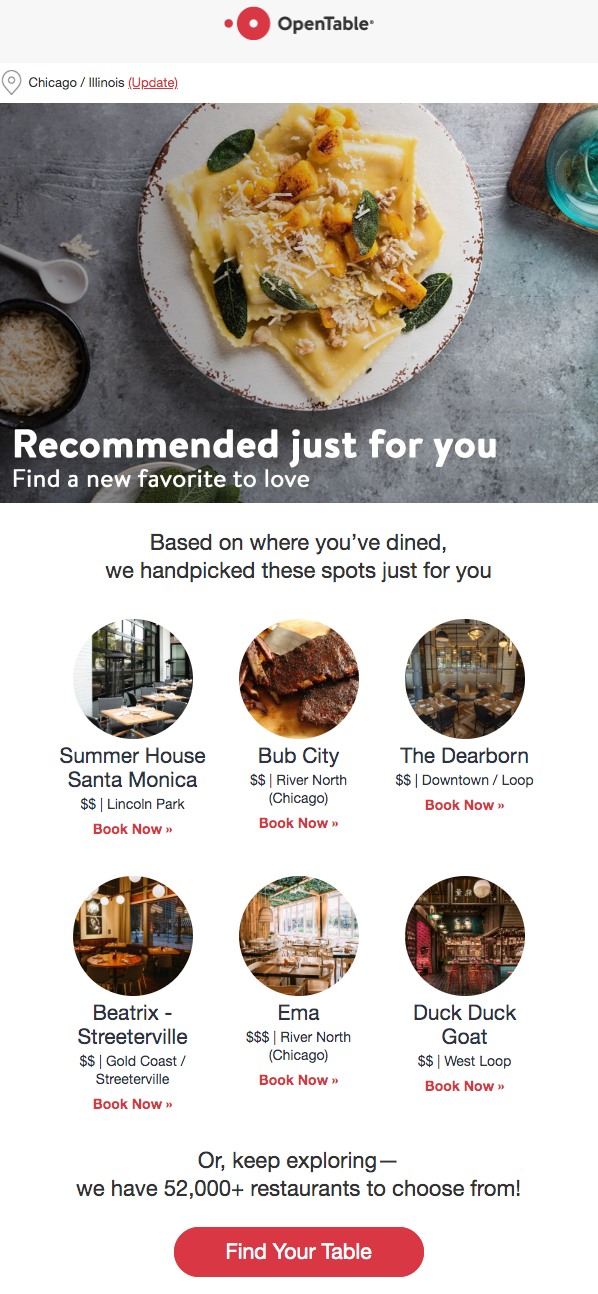
OpenTable’s email is a prime example of how personalized content can enhance the user experience. Rather than sending a generic ‘try a new place’ message, it zeroes in on where the user has dined before to suggest curated options nearby.
Apply Targeted Marketing Campaigns in Practice
Targeted marketing should be included in all digital businesses. Most already do that through the use of PPC advertisements such as Google Ads. However, data can be integrated into other marketing channels in order to take advantage of targeted marketing in those areas.
Also read:
